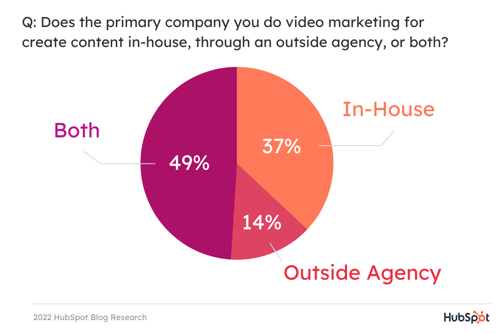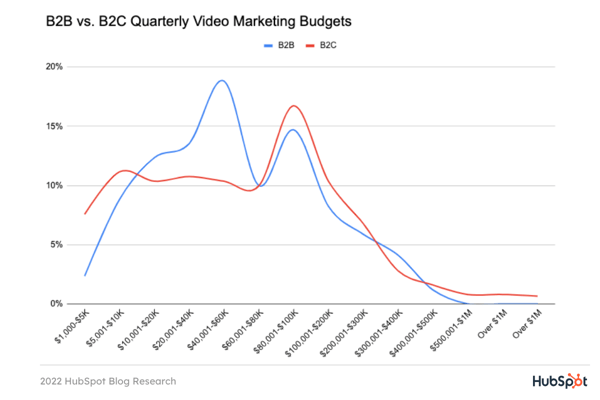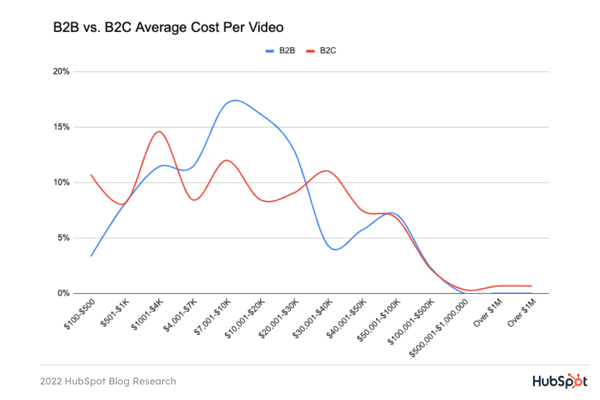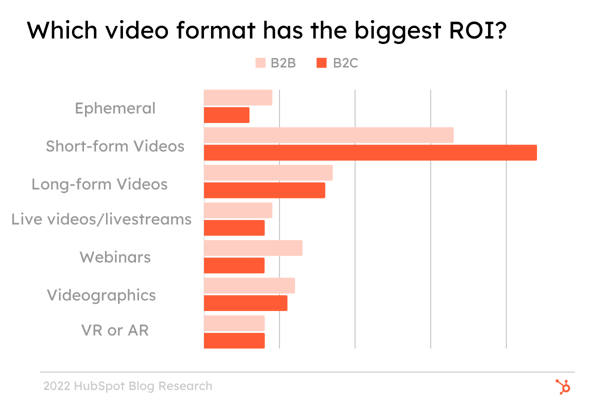![Top B2B vs. B2C Video Marketing Trends You Should Know [2022 Data]](https://www.liveseo.com/wp-content/uploads/2022/06/Top-B2B-vs-B2C-Video-Marketing-Trends-You-Should-Know.jpgkeepProtocol.jpeg)
Both B2B and B2C brands recognize the power of video marketing. In fact, HubSpot Blog Research found that 88% of brands surveyed have a team dedicated to creating video content.
But how do B2B and B2C brands differ as it relates to strategy, goals, and performance? We surveyed 550 global marketers to find out. Read on to learn about the key trends we discovered.
B2C and B2B brands balance creating content in-house with relying on outside agencies.
We asked 500+ global video marketers, “Does the primary company you do video marketing for creating content in-house, through an outside agency, or both?“
37% said in-house, 14% said an outside agency while 49% said both. When breaking it down between B2C and B2B brands, there was only a 1% to 3% difference.

Although there is an argument to be made for both cases, 33% of marketers (both B2B and B2C) surveyed say the ROI is the same in both cases.
However, when asked about the quality of the videos, more B2B brands believed creating video content through an outside agency resulted in better marketing videos.
Meanwhile, 59% of B2C brands believe creating marketing videos in-house is faster and more efficient, compared to only 48% of B2B marketers.
75% of B2C brands also believe marketing videos created through an outside agency are higher quality and more professional, an 18% increase from B2B brands.
Pro-tip: If you want to create high-quality videos in-house, consider tools like Vidyard, Vimeo, and Wistia. They can help you produce and measure high-impact videos that convert.
B2C brands focus on brand awareness while B2C brands advertise products.
When asked “What are the primary goals of your company’s video marketing strategy?” B2C brands focused on increasing brand awareness/reaching new audiences while B2B brands prioritized advertising their products/services.
Where we saw the biggest gap in strategy is in:
- Growing an online community – Only 15% of B2C marketers listed this as a primary goal compared to 25% of B2B marketers.
- Fostering a relationship with customers – This is a priority for 22% of B2C marketers compared to only 13% of B2B marketers.
- Establishing thought leadership – 15% of B2B marketers consider this a primary goal compared to only 9% of B2C marketers.
B2C brands tend to spend more on video.
Although B2B and B2B brands follow the same strategy when it comes to equipment (69% own their equipment instead of renting), B2C brands have allocated more.

When looking at quarterly video marketing budgets, 24% of B2C brands spend between $100K to over $1M compared to 19% of B2B brands.
The same is true when you look at the average cost per video. 29% of B2C brands will spend over $30K compared to 20% of B2B brands.

B2B brands publish more videos than B2C brands.
According to HubSpot Blog Research, most B2B brands (33% surveyed) publish five to seven videos a month while most B2B brands (32%) put out two to four.
This could be because 33% of B2C marketers note a lack of content ideas as the biggest challenge they face when creating video content, 11% more than B2B brands.
When analyzing the average publishing cadence across both aisles, here’s the breakdown.
- Two to four videos (31%)
- Five to seven videos (26%)
- Eight to ten videos (22%)
One interesting piece of data though is that when you look at brands that publish between eight to 30+ videos a month, B2C marketers outpace B2B by 8%.
While B2B brands tend to publish more generally, when you dig into brands with a higher publishing cadence, B2C brands post more.
B2C brands report more success with short-form videos.
We asked marketers, “Which video format has the biggest ROI?” 39% said short-form videos, such as TikTok, Instagram Reels, and YouTube Shorts. So, both B2B and B2C brands have a lot of success with this content format.
However, there’s an 11% gap to note – 44% of B2C brands reported the biggest ROI with this format compared to only 33% of B2B brands.

In addition, our research found that more B2C brands report that short-form video:
- Is the most effective for generating leads, 8% more than B2B brands.
- Gets the most engagement, 14% more than B2B brands.
- Generates a high (81-100%) watch time percentage, 8% more than B2B brands.
- Gets a high (over 10%) clickthrough rate, 7% more than B2B brands.
There you have it – whether you’re a B2B or B2C brand, video marketing is an essential part of any marketing strategy.





